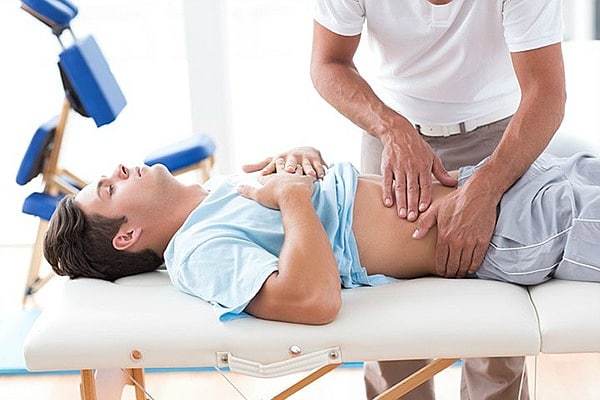Rebound tenderness is just an indication of several medical conditions of the internal organs, to be precise abdominal muscles and a few reproductive organs. It may also influence people suffering from sickle cell emergency and those who have an injury of the abdomen.
Rebound tenderness is a pain that occurs upon elimination of pressure in the belly. It can be found during a physical assessment/ palpation of the abdomen. This sign is usually related to irritation of the parietal layer of the peritoneum.
Must read How to Use an Inversion Table For Stopping Back Pain

Rebound pain definition
Rebound pain is most frequently connected with the therapy of migraine headaches, although this might be an essential concept in other pain treatments. In Migraines patients that take regular doses of analgesics might get a phenomenon called rebound. This happens with drugs which range from aspirin and Acetaminophen to muscle relaxers and opioids. It’s less of a problem with long-acting drugs than short-acting ones. Rebound pain is also known as rebound tenderness or Blumberg’s sign
Causes of Rebound pain
Appendicitis is one potential source of rebound tenderness. When the appendix becomes inflamed, it might irritate peritoneum or if it ruptures the entire peritoneum might be affected by an inflammatory response then leads to rebound tenderness. Rebound tenderness can also be a characteristic of diverticulitis. That is inflammation of diverticula small pouches that form within the large intestine. Gastritis also causes rebound tenderness. The very inflammation of the pancreas and the belly is quite debilitating, and rebound tenderness tends to intensify in the event of any complications related to pancreatitis of gastritis.
Peritonitis is the most frequent reason for rebound pain. The peritoneum is the serous membrane that lines the inner wall of the pelvis and abdomen. In case it becomes uncomfortable that the condition is medically called peritonitis. The inflammation of the serous membrane can develop as a result of bacterial infection, trauma to the abdomen or stomach bleeding. Peritonitis can also be a characteristic of many diseases like systemic lupus erythematosus, familiar Mediterranean fever, and porphyria.
What is Blumberg’s sign?
During the physical examination of the patient, Blumberg’s sign is performed. Typically, it is apt for those patients who arrive at hospital or clinic with the abdominal pain. If the Blumberg’s sign is positive then it is an indication of peritonitis.
How Blumberg’s sign is related to Appendicitis?
Blumberg’s sign or rebound tenderness is an indication of peritonitis, as mentioned earlier. During the emergency management, it is useful in recognizing appendicitis.
It is performed by requesting the patient to lie down comfortably and flat. If they are unable to lie down comfortably in straight position due to tenderness. They can keep something soft below the head to bend the neck easily and can also bend their knees.
Once the patient is comfortable, the examiner applies pressure with his or her hand on patient’s right iliac fossa. It is pressed as much as possible. Examiner keeps the pressure till the level patient is comfortable then suddenly the pressure is released.
If the patient exhibits the impulse of pain on releasing the pressure. It proves the Blumberg’s sign is positive and confirms the tenderness, hence appendicitis. If there is no such pain reported then Blumberg’s sign is negative.
What is the diagnosis of rebound tenderness?
Rebound tenderness is readily confirmed with assessment (palpation) of the belly. A physician applies a gentle pressure on the belly and then removes the fingers. If one feels a pain in the belly following the examiner’s hands have been raised, rebound tenderness is verified.
Left iliac fossa pain symptom checker
It can be verified by keeping a tap on following symptoms:
– Gastrointestinal pain such as inflammatory bowel disease, colonic carcinoma irritable bowel syndrome, diverticulitis, and constipation.
– Renal pain such asrenal stones, urinary tract infection or ureteric colic
– Pain from an adjacent area, for instance, psoas abscess, hip pathology, lobar pneumonia, central abdominal pain as well as rectus sheath hematoma and suprapubic pain.
– Reproductive pain such as ovarian rupture, ovarian cyst, ovarian cyst torsion, pelvic inflammatory disease, ovarian hemorrhage, salpingitis, or seminal vesiculitis in a male.
It is advisable for a person experiencing rebound tenderness to visit a physician for better line of treatment.




You must be logged in to post a comment.